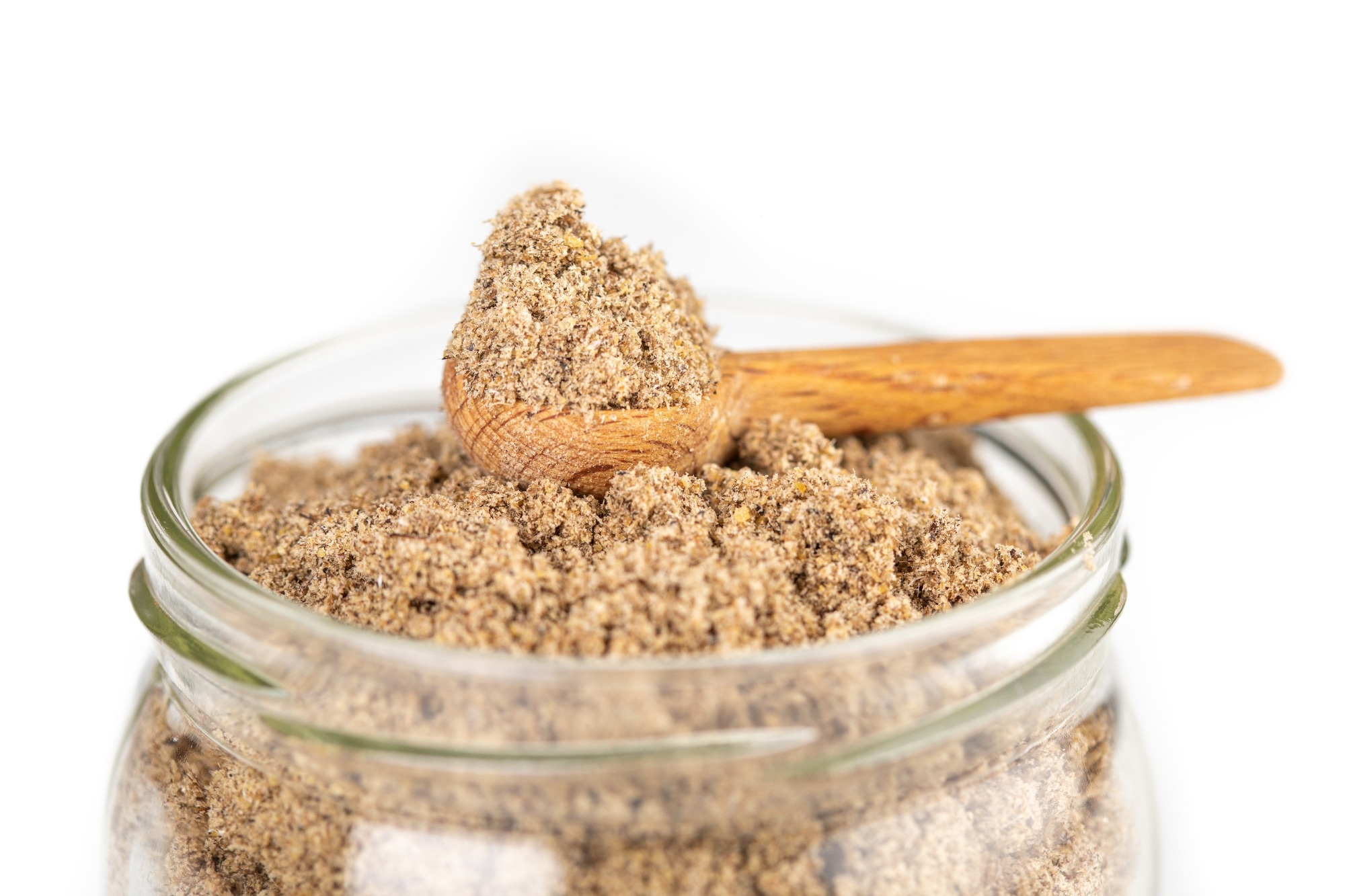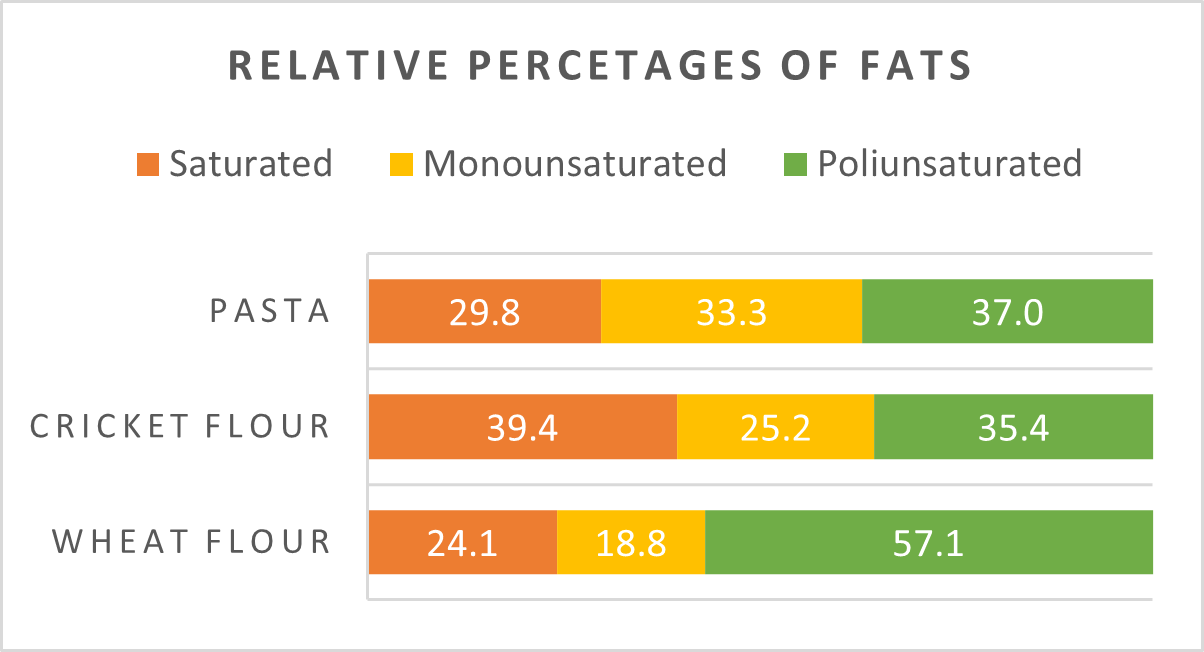Discover how a small addition of cricket flour can turn everyday pasta into a powerhouse of nutrition, combining eco-friendly protein, minerals, and prebiotic fiber, all without compromising safety or taste.
 Study: Cricket Flour for a Sustainable Pasta: Increasing the Nutritional Profile with a Safe Supplement. Image Credit: Giedrius Akelis / Shutterstock
Study: Cricket Flour for a Sustainable Pasta: Increasing the Nutritional Profile with a Safe Supplement. Image Credit: Giedrius Akelis / Shutterstock
A recent study in the journal Foods evaluates the nutritional profile of cricket flour and its potential as a sustainable food source.
Perception and reality of Insect-based foods
Insects are rich in high-quality proteins, beneficial fatty acids, vitamins, fiber, and essential minerals (e.g., zinc, iron, and selenium), making them a favorable nutrient source that could be exploited to fight malnutrition. Besides a high nutritional profile, insect farming has a lower risk of zoonotic disease transmission, emits fewer greenhouse gases, and requires significantly less water and space, compared to traditional livestock farming.
In many parts of the world, including Asia, Africa, and Latin America, insects have been traditionally consumed as food. Insect-based products are highly regulated under European legislation and require prior authorization before commercialization. Although numerous studies have documented the multiple benefits of insect-based food products, they still face cultural resistance, primarily due to unfamiliarity and a fear of novelty, or neophobia.
A previous study has highlighted the nutritional benefits and safety profiles of cricket (Acheta domesticus) flour. This study has shown that the addition of cricket flour to baked goods enhances the flavor and aroma of the product, thereby improving consumer acceptance.
Scientists believe that incorporating insect-based ingredients into traditional foods could enable the gradual integration of these products into the Western diet. The paper emphasizes that strategies such as blending cricket flour into familiar foods and providing clear information about its nutritional value are important for consumer acceptance in Western markets.
About the study
The current study investigates the key nutrient components of cricket flour and a commercially available mixture of durum wheat and cricket flour (containing 10% w/w Acheta domesticus flour). Wheat flour was used as a reference, and wheat pasta served as a control (CTR). An expert chef prepared fettuccine-shaped pasta.
Protein, fatty acid, and mineral contents, such as iron (Fe), copper (Cu), zinc (Zn), sodium (Na), potassium (K), calcium (Ca), and magnesium (Mg), were analyzed using a standard procedure.
The researchers also analyzed chitin content (a fiber with potential prebiotic benefits), total petroleum hydrocarbons (TPH), and polycyclic aromatic hydrocarbons (PAHs) to assess safety.
Study findings
Gravimetric analysis indicated that the ash content in cricket flour constituted 4.2% of the dry sample weight. The moisture content of CTR and wheat–cricket pasta, after 48 hours of drying, was 14.04% and 11.07%, respectively.
The water activity (Aw) values for the control pasta and wheat–cricket pasta were 0.83 and 0.64, respectively. These Aw values for the flours were similar to those measured in dried pasta and other cereal-based products. The Aw values, falling within the recommended range of <0.6 for dry raw materials, indicate high stability, structural integrity, and functionality of the flours during storage. A low water activity also ensures consistent behavior during processing and formulation.
In line with previous findings, the current study indicated an Fe content of 10.8 mg/100 g in cricket flour, which is higher than the Fe content of other common insect-based novel foods containing Tenebrio molitor and Ruspolia differens. In comparison to wheat flour, the Fe content in cricket flour is nearly ten times higher. A similar trend was also observed for Zn (22 mg/100 gram in cricket flour, compared to 0.84 mg/100 gram in wheat flour) and Cu (3.4 mg/100 gram in cricket flour, compared to 1.6 mg/100 gram in wheat flour).
High K (886 mg/100 g), Na (389 mg/100 g), and Ca (973 mg/kg) concentrations were measured in cricket flour. In contrast, wheat flour contained only 133 mg/100 g of K, 20 mg/kg of Na, and 200 mg/kg of Ca. However, the authors note that while cricket flour is rich in several key minerals, consuming enough to meet the full daily intake for nutrients such as calcium, magnesium, or potassium would require unrealistically high amounts; in practical terms, cricket flour is best used to complement other dietary sources.
According to the total fat content, cricket flour contained 11% total fat, and pasta prepared using a mixture of wheat and cricket flour contained approximately 2%. The fat content in insects typically varies among species and even within the same species due to physiological adaptations associated with diet, environmental conditions, and temperature.
Upon consuming 100 grams of cricket flour, 23% of the energy was found to be derived from metabolizing fats. Saturated fatty acids (SFA) accounted for 42% of the total fatty acids, polyunsaturated fatty acids (PUFA) for 41%, and monounsaturated fatty acids (MUFA) for 17%. Previous studies have shown that a diet rich in SFAs leads to an increase in serum low-density lipoprotein levels, thereby increasing the risk of coronary heart disease.

Percentages of fats in different flours investigated.
In cricket flour, short-chain SFAs were found to be absent, implying that they do not increase blood cholesterol levels. Palmitic and myristic acids were detected in the cricket flour samples. The current study indicated that consumption of cricket flour contributes to 9.8% of total energy from saturated fats, while pasta with wheat-cricket flour provides 1.9% of total energy from SFAs.
Cricket flour contained 17% oleic acid, a nutritionally significant MUFA, and these levels are comparable to traditional wheat pasta (15%) and pasta prepared with wheat-cricket flour. Previous studies have demonstrated that oleic acid reduces low-density lipoprotein (LDL) cholesterol, which has protective effects against cardiovascular diseases, neurodegenerative disorders, and certain types of cancer.
Linoleic acid, a polyunsaturated fatty acid, was found at a high concentration in cricket flour, accounting for 39% of the total fatty acids. An increased intake of linoleic acid has been associated with a reduced risk of coronary heart disease.
While cricket flour is considered healthy (Health Promoting Index >1), it has relatively higher atherogenicity (AI) and thrombogenicity (TI) indices compared to wheat flour. These indices, which reflect potential cardiovascular risk, are improved when cricket flour is blended with wheat flour, as in the mixed pasta.
The current study estimated the total amino acid content in cricket flour to be 60%, which was significantly higher than that of most commonly consumed foods. Both cricket flour and mixed flour samples showed higher levels of nearly all measured amino acids, including alanine, valine, and lysine, compared to wheat-based ones. However, compared to mixed flour, pure cricket samples had a higher concentration of amino acids.
Importantly, the study showed that a 100 g serving of cricket flour can provide 100% of the recommended daily intake for essential amino acids, a level that surpasses most conventional food sources.
The protein content of cricket flour is notably higher than that of many conventional foods, including meat, cheese, and wheat flour. The study also notes that chitin, a component of cricket flour, may act as a prebiotic fiber, supporting gut health. Recent research supports chitin’s role as a prebiotic that could benefit human digestive health.
A higher concentration of total petroleum hydrocarbon (TPH) was estimated in cricket flour samples than in other flour and pasta samples. All samples indicated a Carbon Preference Index (CPI) above 1, indicating a biogenic origin of the hydrocarbons. The study also identified that the polycyclic aromatic hydrocarbons (PAHs) found in cricket flour were primarily of pyrogenic (combustion) origin, not petrogenic (industrial), based on diagnostic ratios. Additionally, polycyclic aromatic hydrocarbon (PAH) levels in cricket flour were low and well below established safety thresholds for food products. The study concludes that both TPH and PAH concentrations in cricket flour do not pose significant health risks and confirms its suitability for human consumption.
Conclusions
In comparison to commercially available wheat flour, the cricket flour contained a higher concentration of protein and essential minerals, such as Na, Ca, Fe, and K. Notably, addition of 10% of cricket flour to wheat flour to make pasta substantially improves the nutritional profile and reduces the amount required to meet recommended daily intakes for several key nutrients. However, for some (such as calcium or magnesium), additional dietary sources would still be needed.
The authors highlight that, while cricket flour shows strong potential as a sustainable, nutrient-rich food supplement, its integration into traditional foods, such as pasta, at modest levels, offers a feasible way to enhance nutrient intake without overwhelming sensory or cultural barriers. Consumer acceptance and gradual introduction, supported by clear communication of nutritional benefits, will be key to its wider adoption.
Journal reference:
- Indelicato, S. et al. (2025) Cricket Flour for a Sustainable Pasta: Increasing the Nutritional Profile with a Safe Supplement. Foods. 14(14), 2404. DOI: 10.3390/foods14142404, https://www.mdpi.com/2304-8158/14/14/2404